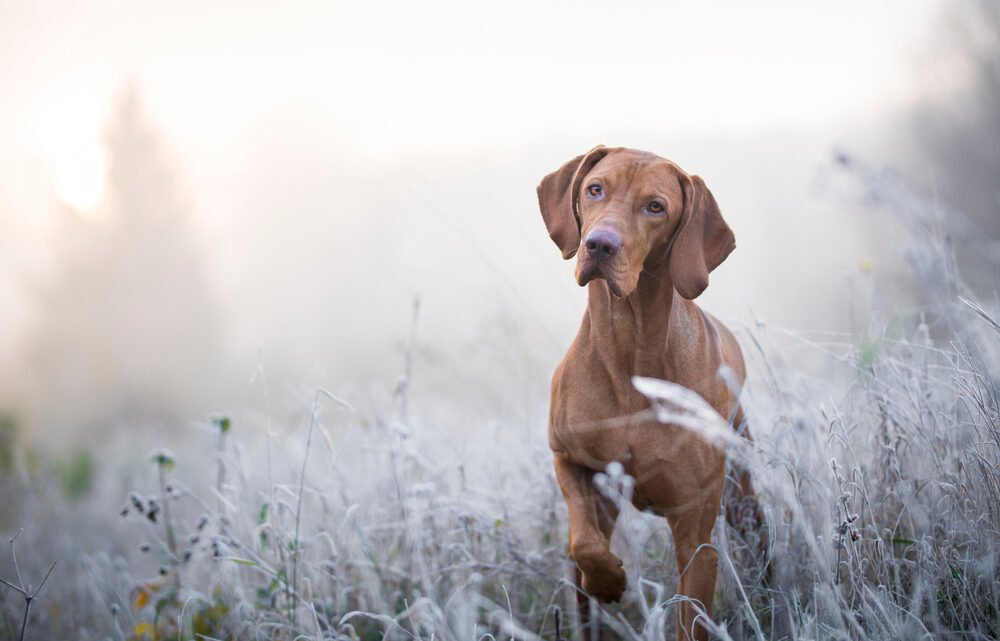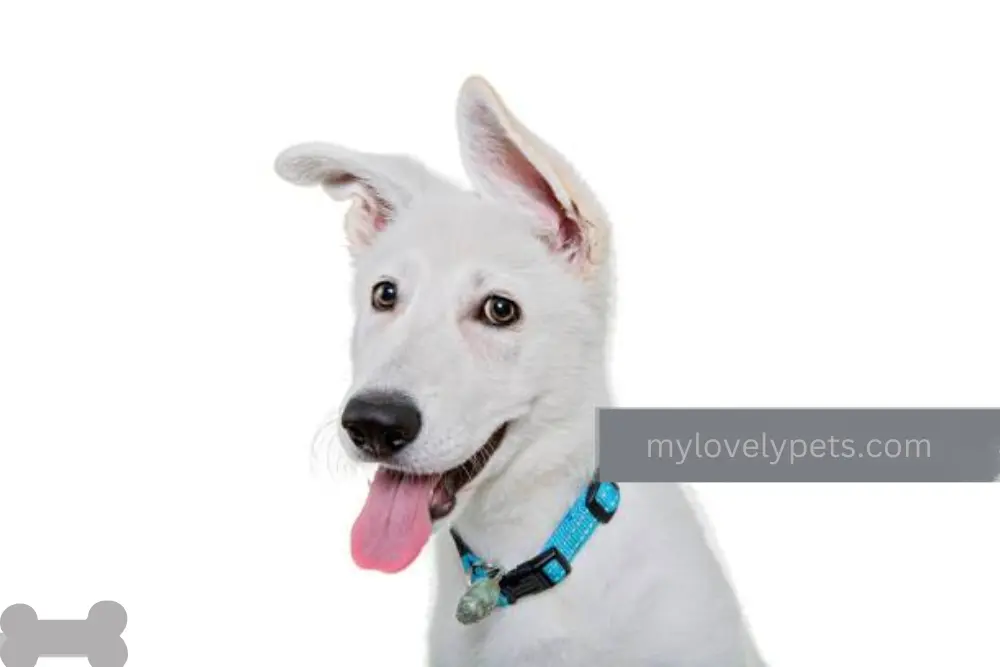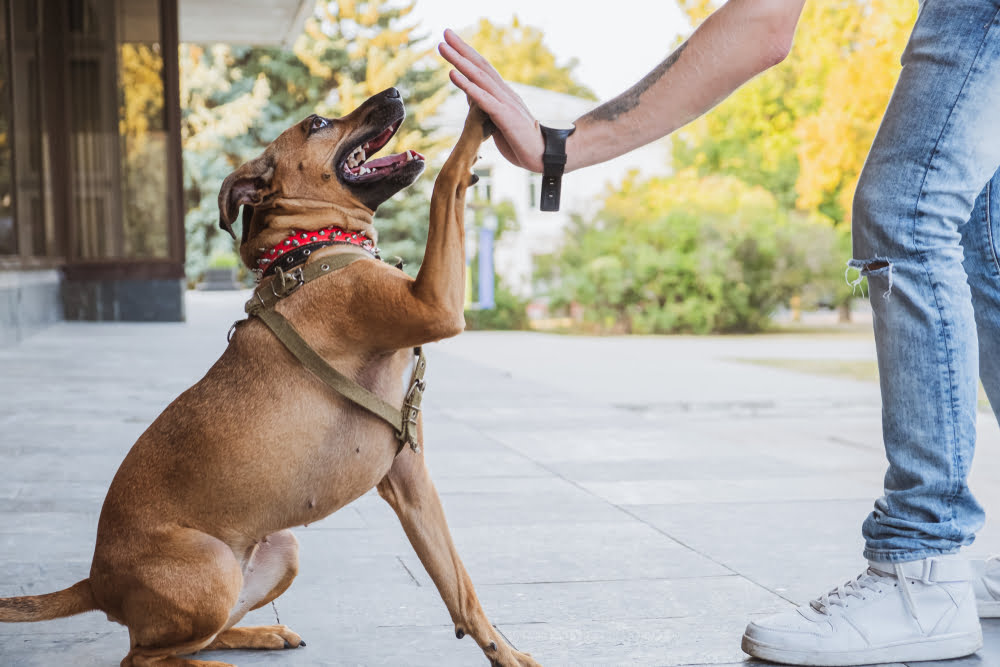
12 Signs of a Confident Dog/ Insecure Dog Body Language
Observing your dog’s body language is the best way to determine his confidence. Signs of a confident dog: He may have his tail on the ground or in the air, with a relaxed body. His ears may be attentive but not pinched back or forward.
Instead of a tight grin or growl, he might let his mouth hang open. Confident and happy dogs tend to have loose bodies and move around a lot.
Signs of a Confident Dog
Here are some pointers on interpreting your dog’s body language and behavior to determine when they are confident and in good health. If these signs aren’t there, it could mean your dog is sick or not right.
Floppy ears
Although breeds have different ear forms, the ears of a content dog are relaxed and rest comfortably against their head. Some dogs’ ears are cocked up or floppy.
Pricking forward ears generally signal that a dog is interested in something. If their ears are drawn back or rigid with hyper-alertness, this usually indicates a worried or fearful dog.
Gentle Gaze
A dog’s eyes and eyelids will be open and relaxed, their gaze will be gentle, and they will frequently blink when they are joyful. Wide eyes, especially if the whites are showing, may suggest fear in your dog. Narrowed eyes and a stern look can indicate hostility.
Dance joyfully
When dogs bounce around or hop and dance, they might be delighted to see their favourite people or other dogs. The dog is typically happy and eager to play when it makes quick movements. When you get home, they are comfortable and want to show it!
Face Expression of Joy
Happy dogs frequently display smiles. The teeth may be visible, but not in an aggressive way; the mouth is soft and open, and the corners are turned up.

These may relax your dog if its tongue is lolling. Open-mouthed smiling may signify stress or overheat in your pet, so be careful not to confuse the two. A furrowed brow expresses worry in dogs, which can signify aggression if a dog is showing teeth or curling its lips.
Relaxed Body and Tail
Happy dogs will have their entire bodies and tails relaxed and wiggle when they’re confident. A dog’s whole body can wag along with its tail when happy. A dog that moves around and shows you its belly is probably thrilled and at ease.
While the relaxed tail position varies depending on the breed, a confident dog will typically lift its tail slightly. If the tail is up pretty high, it could mean that the animal is upset or overstimulated.
On the other hand, a dog is nervous if it seems tense or if its body is stiff. A vital sign of fear is a tail tucked under the body. If your dog stands still and waves its tail in a tight circle, it may be alert or scared.
Playtime and Walks are Fun
Happy and confident dogs enjoy playtime, walks, and rides in the car, most of whom even look forward to it. Even though all dogs slow down as they age, if your dog seems unusually quiet, uninterested in favorite activities, or less social, this could mean they aren’t feeling well.
Happy Eating!
When a dog is happy and healthy, it has a good appetite. If your dog’s appetite changes, it could signify that your pet is sick or unhappy.
Sleeping Lots
Adult dogs who are healthy and happy often sleep up to 16 hours a day. If your dog doesn’t sleep as much as usual, it could be because they are sick or stressed.
Good Behavior
Confident and happy dogs are less likely to be destructive or “naughty.” Using their mouths to explore, dogs naturally engage in chewing. But a dog that chews too much or acts destructively could also be stressed or bored, especially if it is an adult. Dogs often act destructively because they are afraid of being alone.
Friendliness
Every dog, like every person, has a different preference for company. But if your dog is friendly at the dog park, gets along well with other pets in the family, and doesn’t act aggressively toward new animals, these are all signs of a confident dog.
Enjoying Petting
Happy dogs touch each other a lot. When you Pett your dog, if they react, stay close, or even lean into your hand, that means they like the touch. They might need more space if they remain just out of reach or walk away.
Barks of joy
The barks of happy dogs tend to be higher in pitch and shorter in duration than the barks of agitated dogs. But don’t judge your dog solely on their bark. Before you assume everything is fine with your dog, please pay attention to the other cues your pet gives you, especially body language.
How to Tell If a Dog is Confident

Some dogs lack confidence, much like humans, with poor self-esteem, which causes them to be scared of their environment. They may have grown up alone and neglected.
What are the signs of an insecure dog? If you are aware of the warning signs of a nervous dog, take steps to alleviate his anxiety immediately.
Learn the warning signs of low confidence in dogs so you can recognize when a dog feels scared or nervous about anything in his surroundings.
Signs of Low Confidence in Dogs
Insecure Dog Body Language
Here is a brief overview that should help you understand your dog’s body language.
A dog that is anxious, afraid, or with low confidence will display behaviors such as
Insecure Dog Body Language: lip licking, yawning, hypervigilance, moving slowly, stalling, panting, or pacing; dilated pupils; a tail that is low or tucked between the legs; rigid body posture; and a desire to hide, turn away, and refuse treats.
Frightened Dog Body Language: stiff or lowered body posture, ears back, hair standing straight on back, tail upright or low, hyper attentive, may growl, bark, or snarl.
How to Make Your Dog Confident

Understanding your dog’s physical and emotional needs will make him confident. Here are some things you can do to make sure your dog is happy and secure:
Experience Increases Confidence
Confidence-building for your dog takes time, and dogs gain confidence through socialization and experience. Any dog can benefit from constant exposure to new things, especially puppies under 16 weeks old.
A new situation may benefit from having some treats with you. If your dog is nervous at the vet, don’t rush him in. Treats in the lobby, chatting with the vet or tech, and lots of treats in the exam room. Positive experiences build confidence.
If your dog is too anxious, take a break. A break can reduce your dog’s stress by taking a break from the situation and leaving it.
Confidence-Building Training
Some dogs would benefit from a more organized training program. By providing a positive, structured environment, you can boost the confidence of nervous dogs. Establishing rules and boundaries through training can help your dog become more confident and less wary.
Your dog’s anxiety may be dangerous to you or other animals. Consider working with a professional trainer or behaviorist in one-on-one sessions to get your dog back on track. It is possible to gradually design a safe and practical plan to expose your dog to these events through reward-based training. They can monitor your dog and others to ensure safety.
Time, training, and patience are all beneficial whether your dog is shy around new people, afraid of the vet, or needs some extra help. Even a nervous dog can become more confident with the right tools and methods.
Dog Confidence Building Exercises
You can do various exercises with your dog to help boost their confidence and make them more resistant to stressful emotions. You can do a few days to give your dog a sense of accomplishment and empowerment but avoid overworking them since this can be upsetting.
A dog’s rest days are just as crucial as its training sessions, and studies have shown that canines retain a great deal of information while napping.
Playful Agility
- You may make your dog feel more confident by gradually introducing him to agility obstacles.
- Agility involves jumping over hurdles, dashing through tunnels, climbing A-frames, and walking on unsteady constructions.
- How can agility benefit insecure dogs?
- As the dog faces challenges, he gains confidence and enjoys the mental stimulation of constantly modifying his pace and pose.
- Set up some exciting agility equipment in the backyard, and make sure it is suitable for the dog’s age.
- Put bamboo sticks in the grass to construct weave poles. Teach your dog to leap through a hoop.
- This may be linked to two poles and placed in the ground if needed. You can build a “see-saw” by laying wood on guttering.
Clicker Training
Clicker Training Clicker training may help your dog develop confidence.
- Shaping methods such as free and general shaping “open up” a dog’s mind and encourage him to think creatively.
- There will come a time when your dog tries to offer behaviors.
- He will develop new skills for interacting with his surroundings.
- The dog can’t go wrong with free shaping, so it’s a win-win for everyone.
The dog can’t go wrong with free shaping, so it’s a win-win for everyone. If your dog is afraid of strangers, targeting can teach him how to interact with them positively.
Circle
A circle is a simple trick you can teach your dog that helps them get rid of some of their energy or get your attention when they are having trouble getting their message across and feeling nervous.
- To teach the dogs how to circle, we have them follow a treat around in a big circle.
- As they improve, ask your dog to sit at the end of the circle to retain extra energy.
- It’s helpful to ask a dog to circle when you want to break their concentration or if they’re growing restless, but you can’t let them go yet.
- If your dog excels at this, you may ask them to circle to the left or the right.
- Teaching dogs their left and right is an excellent method to make numerous behaviors more challenging and boost their confidence.
Games of Searching and Hunting
Having fun with your dog can be as simple as hiding its favorite treats about the house and yard for it to “find.”
- Start simple, but as time goes on, hide items inside things and on other shelves.
- You can hide food in boxes, bottles, shredded paper, twisted mats or towels, etc.
- Hide a toy around the house or yard and play “find” to have fun. This is very easy to start with and use a thrown toy to get them moving.
- Put food all over the garden, so the dog has to look for it.
Fun Tricks
- Rollover
- Play dead
- Roll
- Give paw
- Both paws up
- Crawl
- Bend
- Weave legs
- WAVE
- Wind around the handler.
- “Hold”
- Put toys in the box
- Middle the handler’s legs
- “Round” an item and return it to the handler.
- Catch a treat


